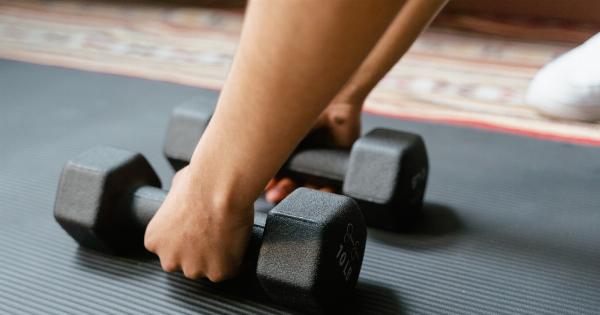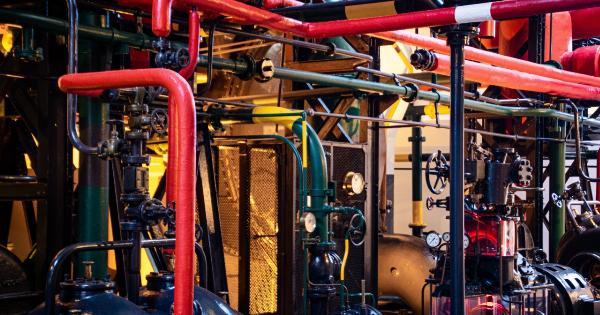The liver plays a vital role in our body’s metabolic processes, such as breaking down fats, filtering toxins, and producing essential proteins.
However, factors like poor diet, sedentary lifestyle, and excessive alcohol consumption can lead to a buildup of fat in the liver, known as liver fat or hepatic steatosis. This condition can lead to serious health issues such as liver inflammation, insulin resistance, and even liver cirrhosis if left untreated.
Why Workouts are crucial to combat liver fat?
Regular exercise has always been emphasized for maintaining overall health and well-being. When it comes to combating liver fat specifically, workouts can significantly help in reversing the condition and improving liver function.
Here are some reasons why workouts are crucial in combating liver fat:.
1. Increased Metabolic Rate
Intense workouts, such as high-intensity interval training (HIIT) or strength training, can boost your metabolic rate. When your metabolic rate increases, your body burns more calories even at rest.
This increased calorie burn aids in reducing overall body fat, including fat stored in the liver.
2. Enhanced Insulin Sensitivity
Liver fat is often associated with insulin resistance, a condition where the body’s cells fail to respond adequately to insulin. Regular workouts improve insulin sensitivity, allowing the body to utilize insulin effectively.
Improved insulin sensitivity reduces the risk of developing type 2 diabetes and helps in reducing liver fat.
3. Fat Burning and Weight Loss
Engaging in intense workouts promotes significant fat burning and weight loss. Aerobic exercises, like running, cycling, or swimming, can be particularly effective in burning excess fat from the liver and other areas of the body.
Shedding extra pounds through exercise helps reduce liver fat accumulation and lowers the risk of liver-related complications.
4. Muscle Building and Strength
Strength training exercises, such as weightlifting or resistance training, not only help build muscle but also improve overall body composition. With increased muscle mass, the body becomes more efficient at burning calories and metabolizing fat.
These exercises also improve liver function by reducing liver inflammation and enhancing detoxification processes.
5. Improved Blood Lipid Profile
Liver fat is often associated with dyslipidemia, an abnormal blood lipid profile characterized by elevated levels of cholesterol and triglycerides.
Regular workouts, especially aerobic exercises, help improve blood lipid profiles by increasing levels of HDL (good cholesterol) and decreasing levels of LDL (bad cholesterol) and triglycerides. These improvements promote better liver health and reduced liver fat accumulation.
6. Stress Reduction
Chronic stress is known to contribute to liver fat accumulation. Engaging in intense workouts helps release endorphins, which are natural mood-boosting chemicals.
Regular exercise helps reduce stress levels, promote better sleep patterns, and provide an overall sense of well-being. By managing stress effectively, you can prevent or minimize liver fat accumulation.
7. Enhanced Liver Detoxification
Exercise stimulates blood circulation and enhances the function of various organs, including the liver. Increased blood flow to the liver helps in the efficient removal of toxins and waste products, reducing the burden on the liver.
By improving liver detoxification processes, intense workouts support liver health and combat liver fat.
8. High-Intensity Interval Training (HIIT)
High-Intensity Interval Training, or HIIT, is a type of workout that involves short bursts of intense activity followed by short recovery periods. HIIT workouts are incredibly effective in burning calories, increasing metabolism, and reducing liver fat.
Examples of HIIT exercises include sprinting, jumping jacks, burpees, or cycling at maximum effort for short intervals.
9. Circuit Training
Circuit training is a combination of strength training and aerobic exercises. It involves performing a series of exercises back to back with minimal rest in between.
Circuit training aims to increase strength, burn calories, and improve cardiovascular fitness. It helps reduce liver fat by promoting overall weight loss and improving muscle-to-fat ratio.
10. Cardiovascular Exercises
Cardiovascular exercises are essential for overall fitness and combating liver fat. Activities like running, cycling, swimming, or dancing elevate heart rate and increase oxygen delivery throughout the body.
These exercises stimulate fat burning, boost metabolism, and reduce liver fat accumulation. Aim for at least 150 minutes of moderate-intensity cardiovascular exercise per week.
Conclusion
Intense workouts play a crucial role in combating liver fat and improving overall liver health.
By engaging in regular exercise routines, you can reduce liver fat accumulation, improve insulin sensitivity, enhance liver function, and lower the risk of liver-related complications. However, it’s essential to consult with a healthcare professional or fitness trainer before starting any intense workout regimen, especially if you have underlying health conditions or are new to exercise.





























